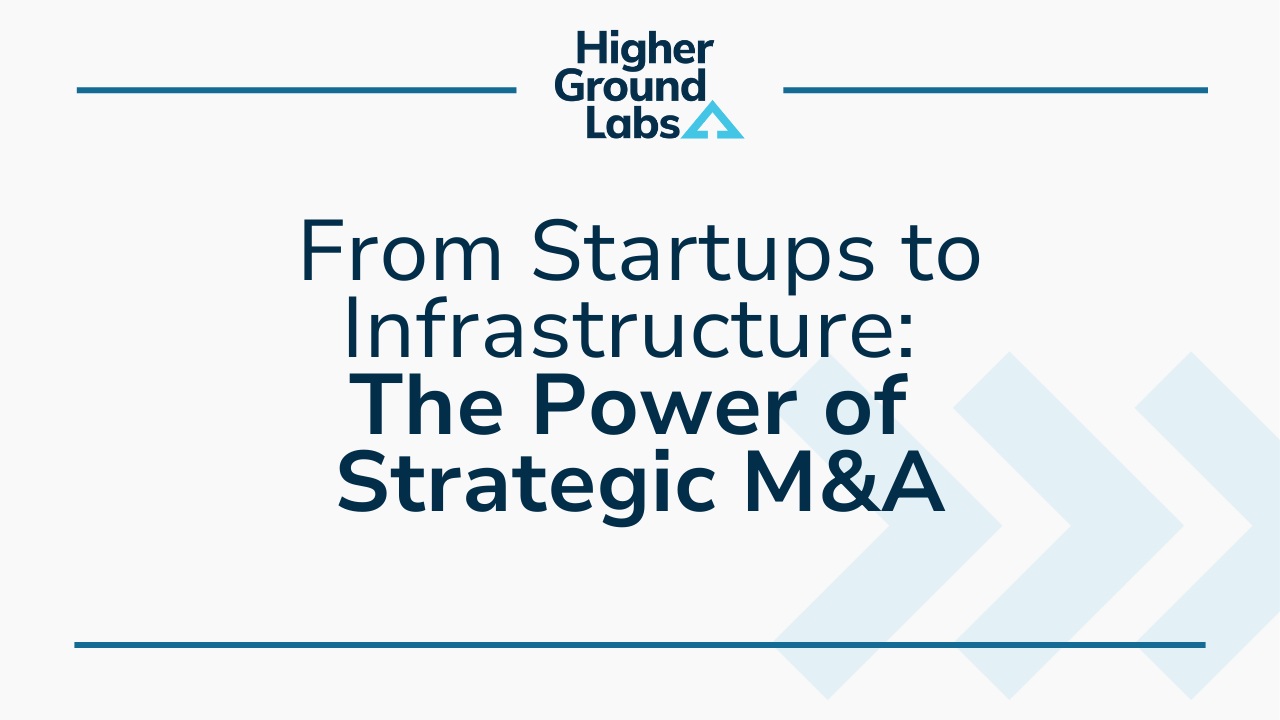The role of data in down-ballot races is one of the most important questions of the 2020 election cycle. Data is often mythologized in winning races, blamed in losing ones, and nearly always associated with the future of campaigning. But what does data really look like in a down-ballot race? As high-end tools proliferate—mostly aimed at capitalized state-wide and federal races—is there a way that down-ballot candidates can leverage the power of data?
I spent three months as a fellow with Higher Ground Labs. In that role, I obsessed over this very topic. I interviewed 26 people, including candidates, campaign managers, political operatives, data experts, and campaign historians. My work as the Executive Director at Bluebonnet Data, a nonprofit that recruits and trains college students and recent graduates to become data teams for down-ballot campaigns, further informed my work for this report. Thanks for reading and I hope we can collaborate!
What is the role of data science in down-ballot, Democratic campaigns that don’t have a full-time data director?
Before examining how a campaign uses data science, we must understand why it is used and why it is so critical. Data science is a “broad field that refers to the collective processes, theories, concepts, tools and technologies that enable the review, analysis and extraction of valuable knowledge and information from raw data” (Technopedia). Every campaign uses some form of data science, whether it be sorting through essential information stored in a voter file or the tracking of local news, to inform their decisions and tactics. Data science is not only what will keep you from knocking on the same door ten times or repeatedly calling a disconnected phone number, but also what allows you to scale voter contact memory and run an efficient organization for volunteers and staffers.
Down-ballot campaigns are “offices listed below the most important—typically national—race on a ballot (Merriam-Webster).” This could mean everything from a local school board or county council race to a full-scale congressional campaign. When it comes to these races, the role of data science is simple: to make informed decisions, thus allowing you to save resources and reach voters.
Save Resources
Time is the most valuable asset of a campaign. Data science and technology can be combined to help automate existing tasks for a campaign, such as keeping track of finances, building communication materials, or logging volunteers and supporters at events. For example, Warchest, a finance application built for candidates and campaign managers, allows the user to log and track expenses, donations, and more. Reports are printable and shareable, helping teams save time communicating bottom lines and quarterly standings. By automating the task of financial management, this tool is able to save the campaign time and money.
Smaller campaigns have to make tough decisions on where to focus their funds. Although it varies by state, there is a reliable set of expenses that most campaigns can expect to encounter: salaries, printing and mailer costs, and usually, access to the voter file. Let’s focus in particular on one of these costs: whereas some states offer voter file access for free, software that would allow a campaign to manage their data, such as VoteBuilder or VAN, will inevitably come at a price. According to campaign manager Clara Sandrin, “access to such a crucial piece of technology can make or break a race.” Campaigns have to prioritize these resources, ensuring necessary access before being able to work with the data. Data science practices should allow a campaign to then make the most out of the information available, thus saving resources and maximizing value for services in the long-term.
Reach More People
A campaign begins with two tasks: calculating votes to win and building a voter universe. To calculate votes to win, a campaign manager may look at the electoral history of the district, the numbers of registered and unregistered voters, as well as the voter demographics in their district. Voter data is “the lifeblood of a campaign” according to Ari Trujillo-Wesler, Co-Founder of OpenField. Once a campaign understands their district and demographics, they can build their voter universe: number of Democratic and Republican GOTV voters, persuadable voters, and other groups.
By understanding the data, campaign teams are able to make better predictions on expected turnout, best targets for outreach, and specific goals for the campaign to be successful. Karim Farishta, a former campaign manager with experience in Texas and Montana races, used data and field technology for “strategically prioritizing who, and to what degree and frequency,” is being targeted in a campaign. Once their lists were established, they were able to run a more effective field program that reached more people.
A campaign can invest in data science early on in order to increase the value of canvassing expenses and expand voter outreach. Zach Brown, State Representative from Montana, saw voter file managers and canvassing apps as powerful tools when “running a small-scale campaign.” As a Democratic candidate in a red-to-purple state, he uses voter data for targeting persuadable voters, identifying Republican-leaning candidates to talk to during his first pass of canvassing. For Brown, it’s about “how you build the bench,” fostering a more robust voter base of people rather than returning to turn out the same base each election cycle. Brown was able to consistently reach new voters and keep up-to-date information on his base by using data science and technology, providing a robust dataset not only to his campaign but also to other local Democratic candidates.
Leveraging Data Science to Win a Campaign
Now that we understand why we use data in a down-ballot campaign, let’s examine how it can be used to win. If your campaign video goes viral or a millionaire decides to drop out of the presidential race and fund your campaign instead, then invest in user-friendly and low-maintenance tools that will enhance your metric-tracking. Until then, use what you have to build up your data repository and inform your campaign’s decisions. The best approach isn’t necessarily running hardcore data analytics, it’s using the data you have in a clean and consistent manner.
A Data-Driven Campaign
Start with this: everything is data. To leverage data as a down-ballot campaign, throw out the constraint that the only data available to you is found in the voter file. Track not only who you talk to, but which canvassers talk to the most voters, how many of those canvassed show up to your events, what is the rate of return for canvassers, how much interaction does your Facebook post garner on Monday versus Wednesday, and more. Create metrics and commit to tracking them in accessible tools such as Microsoft Office’s Excel or Google Sheets. Good data science begins with great data organization.
Commit to being a data-driven campaign, and you will see the results. In Elizabeth Warren’s 2012 Massachusetts Senate campaign, Warren’s GOTV Director accelerated their canvassers by making data science and MiniVan part of the overall field strategy. After months of app integration, the team had best practices established for reporting their data and making goal adjustments based on reporting. Canvassers were assigned specific doors based on turnout scores and their reach was maximized by a system in which field directors would text the next assignment. In her second election for the Massachusetts State Senate seat, Warren was able to increase her win margin by seven percent.
“But I’m not a Tech Person”
For those that do not count themselves tech savvy, campaign technology can pose a daunting challenge. With more data to work with now than ever before, it is essential to be trained in sorting, understanding, and drawing insights from the information available. Bryan Whitaker from TargetSmart highlighted the challenge of training volunteers on how to work with campaign data and technology, saying that across campaigns, Democrats have “lost [the] ability to train new volunteers.” Ben Fuller from Civis Analytics emphasized this problem, saying that the data collected by campaigns can be extremely useful, “but people don’t know how to use it.”
The following groups will help you connect to technical talent for hire, data-focused volunteers, and helpful training for your campaign team.
- Bluebonnet Data – Bluebonnet recruits trains college students and recent graduates to work on volunteer data analyst teams for down-ballot Democrats. Contact becca@bluebonnetdata.com if you are interested in being matched with a Bluebonnet team.
- Arena Academy – Interested in being trained in technical methods as a candidate, campaign manager, or data director? Go to arena.run to learn about upcoming academy training sessions and other resources.
- DigiDems – People with technical skills can apply for full-time work with DigiDems. New recruits will go through the DigiDem training on digital security, campaign technology use, and digital outreach before being staffed on a Democratic campaign.
- DataDems – Apply for the seven day Data Bootcamp, an in-person training focused VAN, Excel, SQL, reporting, modeling, racial equity in data, intra-campaign communication, and more.
- RagTag – Ragtag’s volunteers include developers, content creators, strategists, designers, data scientists, organizers, and managers.
- Tech for Campaigns – TFC deploys technical talent volunteers from Silicon Valley to help Democratic campaigns in web development, social media, paid marketing, and data analysis.
By leveraging data science and technical talent, every campaign can become a more efficient, data-driven organization. An early investment in data science will help your campaign make informed decisions, thus allowing you to save resources and reach voters. District data is essential—such as historical election results, registered and unregistered voter numbers, and voter demographics—but so too is the data generated by your own campaign organization. Knowing your data will allow you to maximize efficiency for your campaign organization and increase your chances of success on election day. To leverage data science, commit to being a data-driven campaign and integrate data collection and data-based decision-making into your campaign organization. Hire or recruit technical talent to work at every level of your campaign organization. If you’d like to accelerate the technical capabilities of your campaign, consider partnering with a progressive organization that will help train your volunteers or connect you with a nationwide network of talent.
Special thanks to Betsy Hoover and Teddy Gold for their mentorship and support in the formation of this report. Thank you to those who took the time to interview and offer their unique perspectives on the role of data science in down-ballot campaigns:
Mussab Ali | Christopher Bray | Zach Brown | Markose Butler | Rachel CampbellAshok Chandrasekaran | Amanda Coloumbe | Paul Dingus | Karim Farishta | Ben Fuller | Nathán Goldberg | John Hagner | Lizza Harrison | Ben Herndon-Miller | Joon Kim | Hillary Lehr | Allie PolaskiDavid Radloff | Jessica Rowald | Clara Sandrin | Sam Sterling | Danielle Strasburger | Hal Triedman| Ari Trujillo-Wesler | John Verghese | David Wagenhauser | Bryan Whitaker | Graham Wilson



